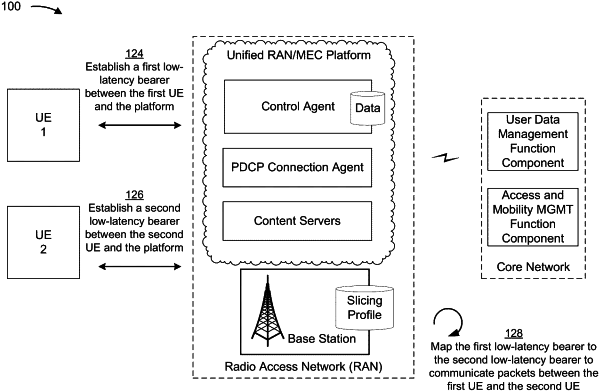| CPC H04W 8/082 (2013.01) [H04L 43/0858 (2013.01); H04L 45/121 (2013.01); H04L 47/56 (2013.01); H04W 40/12 (2013.01); H04W 72/543 (2023.01); H04W 8/20 (2013.01)] | 20 Claims |

|
1. A method comprising:
determining, by a device, that a first packet, associated with a first packet flow, and a second packet, associated with a second packet flow, are destined for a low-latency application having a specified latency range,
wherein the device is a unified radio access network (RAN) and multi-edge computing (MEC) platform and wherein the first packet flow is associated with a first user device and the second packet flow is associated with a second user device;
identifying, by the device, a first low-latency bearer and a second low-latency bearer configured to satisfy the specified latency range associated with the low-latency application,
wherein the first low-latency bearer is between the first user device, the device, and a base station, and
wherein the second low-latency bearer is between the second user device, the device, and the base station;
mapping, by the device, the first packet flow to the first low-latency bearer; and
mapping, by the device, the second packet flow to the second low-latency bearer.
|